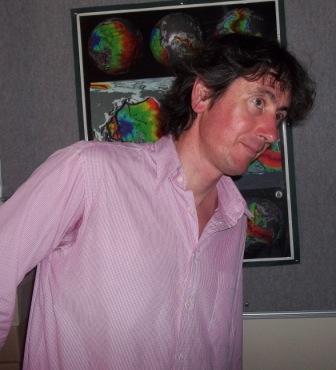
The Catchment Research Group (CRG) launched its Water Circle Seminar Series last week with a well-attended inaugural lecture given by Dr Stuart Downward of Kingston University, London. He opened his talk by explaining that water is a contested geography, and is becoming scarcer worldwide.
Dr Downward's main research focus is in river channel restoration, and his talk, entitled Urban river restoration challenges - experiences and transferable lessons, posed two questions; what are the transferable lessons that can be taken from the work on London's rivers and used in river restoration elsewhere, and what crossover can there be to other areas of conservation, such as wetland restoration?
The changes in rivers are not all recent. The Thames, for example, has experienced human activity since Roman times, 2000 years ago. However, it is industrialisation which has really impacted on river systems, particularly those within cities.
Industrialisation did increase dramatically during the 18th century, yet a thousand years ago up to 600 mills were located along the Thames. If a suggestion is made that a river be restored to its pre-disturbance state, how far back does one go?
It was in 1858 that the true extent of the state of London's rivers finally became apparent to those in power. The Great Stink drove parliament away from its seat along the Thames, and a solution to the problem of raw sewage and industrial waste had to be found.
He briefly discussed the fact that only engineering solutions were proposed to solve the water management crisis; the smaller rivers, such as the Fleet, were covered over entirely and became underground channels.
Bazalgette's ingenious and still existing sewer system saved the day for the Victorians, but even now the rivers around the London periphery are badly degraded. Beds have been widened and narrowed, flood plains have been tampered with and the fine sediment deposition, when analysed, still has untenably high levels of metals such as cadmium and lead. How then does one restore these rivers to a state where they can once again be a green lung for the community?
Dr Downward makes the point that river restoration is not just about bio-restoration. There is a confluence of criteria involved; social/aesthetic, chemical, biological and geomorphological.
In urban areas you are dealing with both people and engineering. So what is truly meant by restoration, and how is it carried out? He explains that what is needed is a sustainable design solution. To achieve this it is essential to consult with the residents of an area, and to have a clear goal as to what state the area is to be restored to.
Dr Downward gave the example of Morden Hall Park in South West London, which was a Multi Restoration Target. The river has been restored to health and the old Mill along its length has been restored as part of the area's cultural heritage.
In beginning restoration work, one has to look at the degree of physical constraint the river is under. Is it possible to restore flood plains, by removing culverts if necessary? And if this is not possible, what else can be done? He described improving low-flow river bed areas with gravel seeding, which creates a more dynamic flow and allows the river to re-oxgenate.
In conclusion, Dr Downward reiterated that river restoration is a new science, which needs constant evaluation and the re-surveying of restored areas. Scientists can evaluate what worked and what didn't, and establish databases for the sharing of information. “Water research,” says Dr Downward, “draws everyone together. Everyone is a stakeholder; it galvanises people and gets them motivated.”
